If you are looking for the best way to cook a steak, you need to try the reverse sear steak method. You will get perfect results every time!
Grab your ribeyes, sirloins, t-bones, porterhouses, and whatever else you can get your grubby little hands on. We are cooking up the best dang steaks you've ever had, and we are doing it in reverse! Oh, and best of all, the method is pretty much full proof. Let's eat!
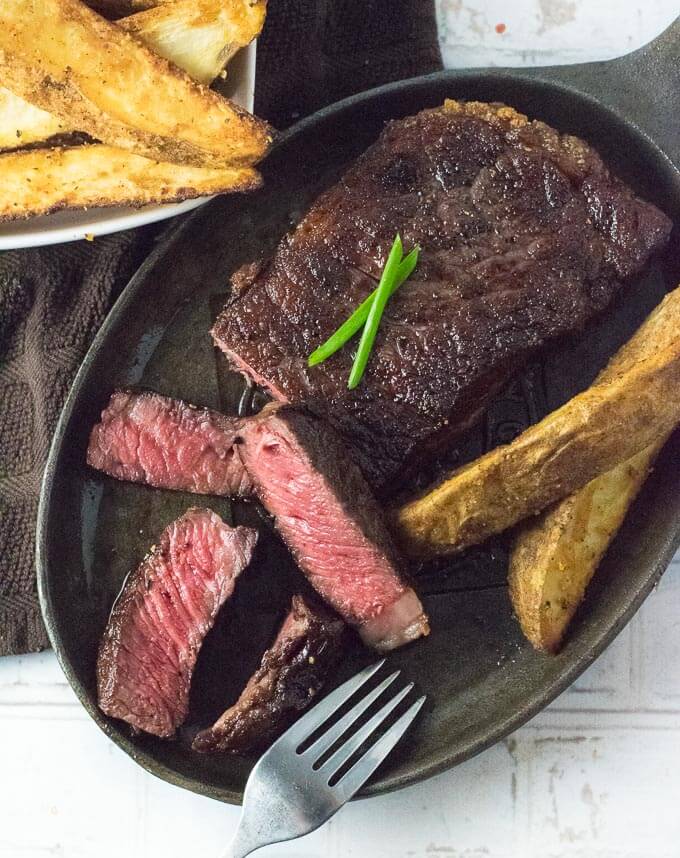
Reverse Sear Steak
As the name implies, the reverse sear steak method requires you to cook the steak in reverse order, first bringing the interior up to temperature and finishing the steak by searing the exterior. This is similar to the approach described in my How to Cook Frozen Steak tutorial in that it utilizes both the stovetop and the oven.
Best Way to Cook Steak
Many people agree, reverse searing a steak is the best way to cook
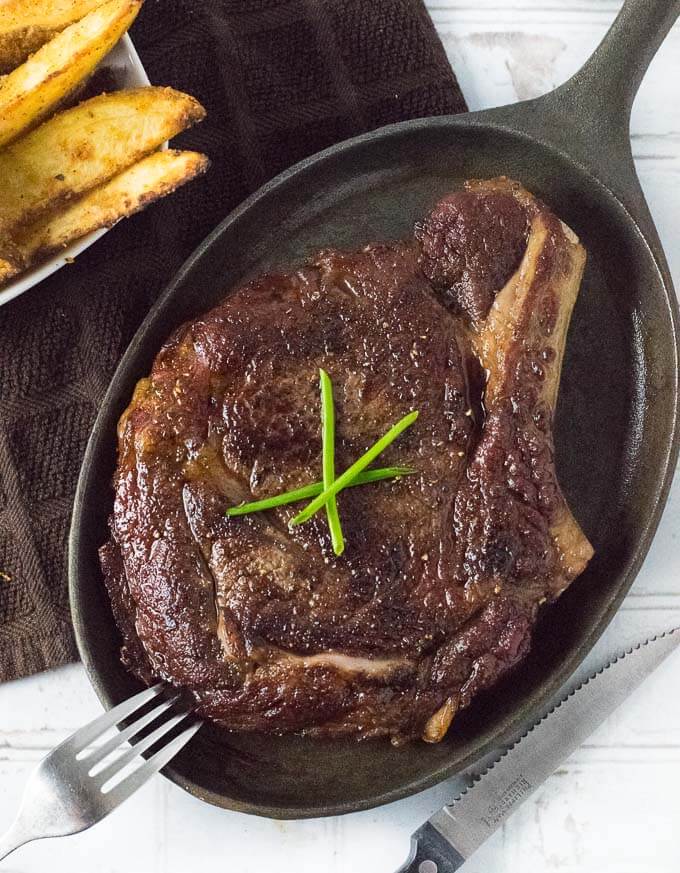
Reverse Sear Steak Oven Temperature
The steak is first brought to your desired temperature in an oven preheated to 250 degrees. Any temperature between 225 and 275 will work just fine, but I find 250 to be a good compromise between the considerably slower cooking 225 degrees and the almost too warm higher temperature ranges.
Since you cannot actively monitor the steak while it roasts in the oven, you will want a digital meat thermometer (affiliate link) to keep an eye on the temperature of the meat. For the price of one
Reverse Sear Steak - Grill
I have previously written about How to Grill Steak, but there is no reason why you cannot also reverse sear steak on a grill. To do so, you will need to use zone heating by piling the coals on the far side of the grill and set the steak on the opposite side while the interior comes to temperature.
Once the steak is at the temperature you desire, move the steak onto the grate directly over the hot coals and sear each side.
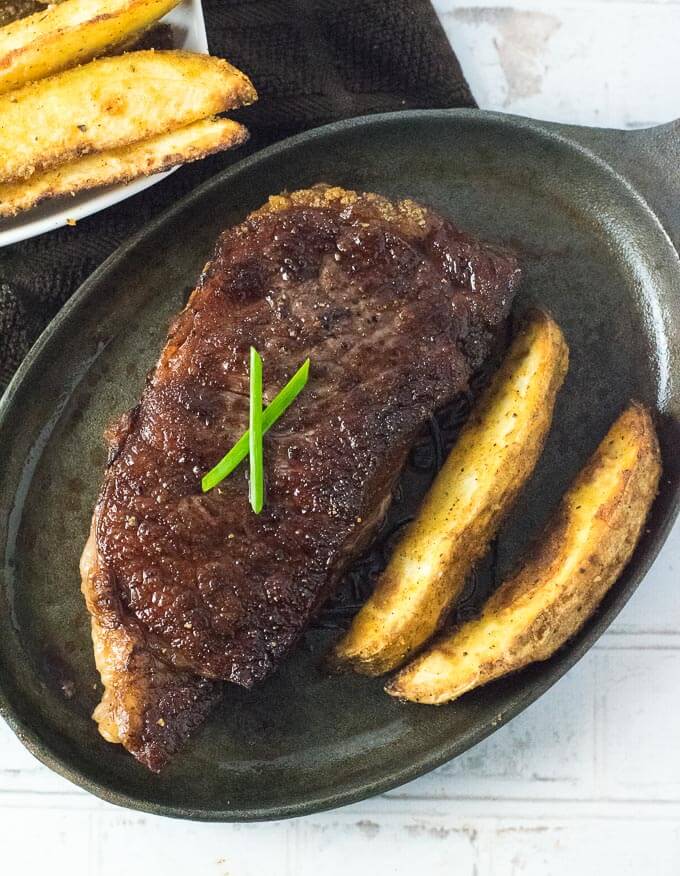
Reverse Sear Steak Thickness
It is often said that steaks need to be 1 ½" thick, or thicker to use the reverse sear method. However, I have tested it out with steaks between ¾" to just under 1 ½" and they all turned out fantastic. Obviously, thicker steaks are always more preferable, but don't let the thickness of your steak dissuade you from reverse searing.
When is Steak Done?
I typically take my steak out of the oven when it is 5 degrees below my intended target, as the temperature will still rise a bit outside of the oven and while the steak sears. The following can be used as a guide for your desired steak's final temperature:
- 125 degrees for
rare steak. - 135 degrees for medium-rare steak.
- 145 degrees for
medium steak. - 150 degrees for medium-well steak.
- 160 degrees for
well-done steak. (there is no point in reverse searing a steak to well-done, as there are quicker methods to achieve a fully cooked steak)
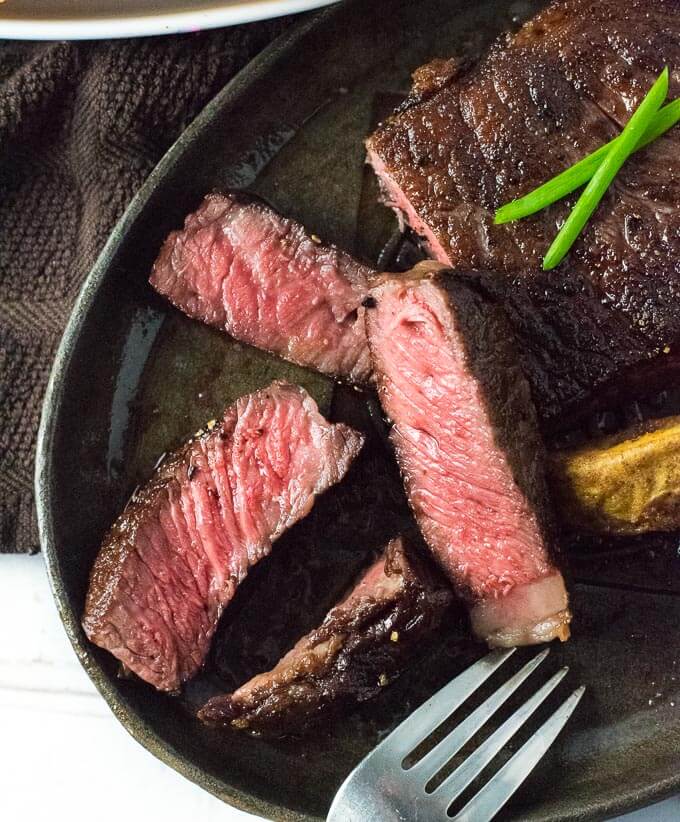
Steak Dinner Ideas
The reverse sear steak method is adaptable to many steak recipes, so you need
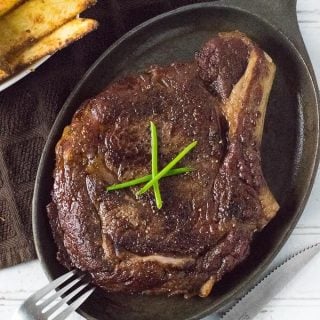
Reverse Sear Steak
Ingredients
- 16 ounce Ribeye Steak (or any cut or size of your choice)
- Salt and Pepper
- 2 tablespoons Cooking Oil
Instructions
- Season steak liberally with salt and pepper (can use a steak seasoning rub as well).
- Optional: Let steak rest uncovered in the refrigerator overnight to dry the exterior.
- Preheat oven to 250 degrees.
- Set steak on a wire rack on a rimmed baking sheet and cook in the oven until it is 5 degrees shy of your desired final temperature.
- Heat oil in a skillet over medium-high heat on the stovetop and add steak, searing on each side for 45 seconds, or until nicely browned.
- Let steak rest for 5 minutes and serve.


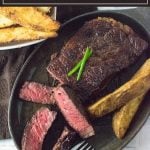
Of Goats and Greens
I've started reverse searing with sous vide, it looks great to be able to do this with more conventionally cooked meats.
Phil Sharp
Very practical, tasty and healthy recipes. Very much enjoy reading and using you ideas.